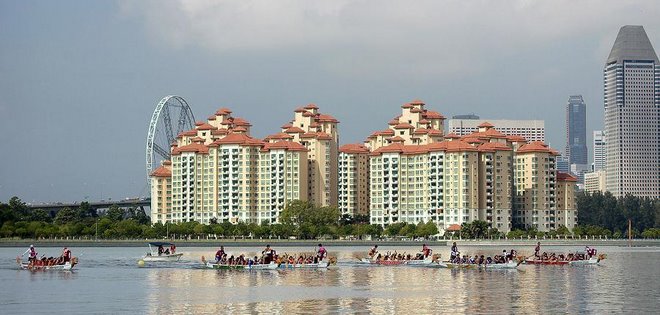An Antipodean Middle Earth: The quest of the Ring on two islands
Often cited as a the star of the recent Lord of the Rings movies is the scenery of New Zealand, which substituted for JRR Tolkien’s mythical Middle Earth. Filming for the three movies (The Fellowship of the Ring, The Two Towers and The Return of the King) was done in outdoor locations on both the North and South Islands.
Lord of the Ring Sites
The Shire, home of the short-bodied Hobbits, was built in the area
of Hinuera while the town of Matamata was adapted to serve as Hobbiton (pictured above), the main town of the Shire. This area was renowned for its very green grass fields, which made it the perfect stand-in for the fertile and rich soil that the Shire was supposed to be.
The scenes of Mount Doom in the Dark Lord’s land of Mordor were filmed in the suitably volcanic Rotorua area. Mount Tongariro served as the volcano Oroduin, which was the destination of Frodo bearing the Ring to be destroyed. The lava-formed ground and bubbling hot springs lends authenticity to these scenes, which gain greater atmosphere when filmed in twilight. This area also served as the location for Emyn Muil, the barren and rocky country that Frodo and Sam have to cross first on their journey to Mordor. The towering fortresses of Minas Tirith, Isengard and Helm’s Deep were filmed in a quarry located in Lower Hutt, near Wellington.
Crossing to the South Island, we find many of the great plains that serve as excellent backdrops for the vast open country scenes. The Golden Hall of Meduseld, home of the King of Rohan was built on the summit of Mount Sunday, outside Canterbury. The final battle scenes at the Pelenor Fields was set in Twizel, as were some of the scenes showing the horsemen of Rohan riding. The largely uninhabited country of Tarras was chosen for the scenes where Frodo is chased by the Black Riders and where the Orcs attack the Fellowship.
The “Adventure Capital of the World”, Queenstown, was selected as the setting for several riverine scenes. The tall trees of the forest in the area called Paradise in Glenorchy, near Queenstown made it perfect for scenes
of Lothlorien, the elven forest. The Ford of Bruinen (pictured right), where Frodo needs to escape from the oncoming Black Riders, was filmed
in Arrowtown, 20 minutes from Queenstown. You can float down the river
or even bungy jump here.
The dead marshes, where Frodo and Sam come face to face with the
well-preserved corpses of warriors who had fallen in battle hundreds of years ago were portrayed by Kepler Mire, located in Te Anau in the far south.
The harsher country of Milford Sound served as the backdrop for scenes of Fangorn Forest, where the very trees themselves come alive, tended to by the tree-like Ents, most ancient of the inhabitants of Middle Earth.
Studio scenes were shot in Wellington, while special effects and computer graphics were developed here as well.
So next time you want to make that trip to a movie set, why not New Zealand ? Admittedly, the real inspiration for The Lord of the Rings lies in various parts of England, but real connoisseurs would probably agree that New Zealand is one of the last few places where that vision can still be captured in today’s world. After all, the film makers felt that way too.










